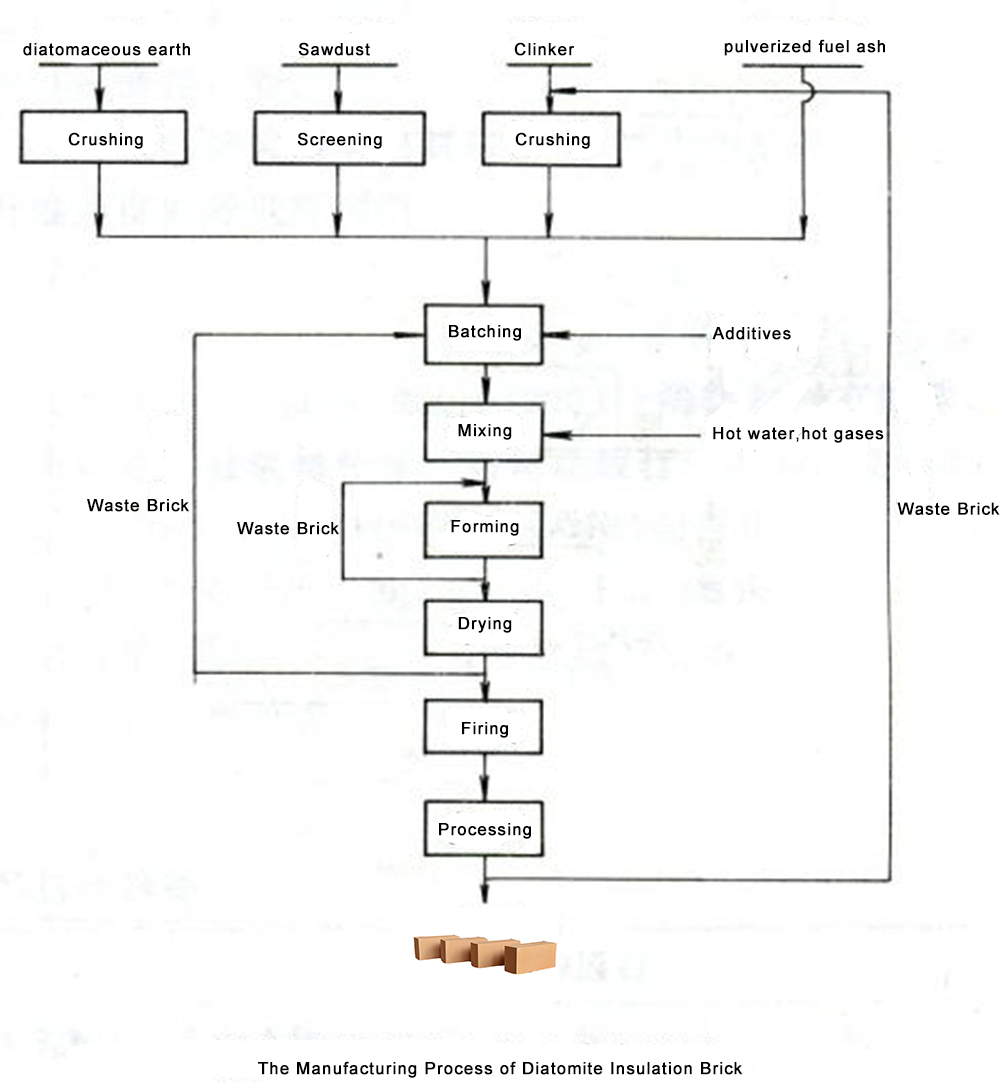Product Search
Quickly find the product you need
Products List
Refractory Knowledge
- Refractory material production process
- the development of the refractory brick i
- Aggregates Used For the Production of Ins
- The Use of Mullite Insulation Bricks
- Pros and cons of lightweight mullite bric
- Thermal Shock Resistant Fireproof Heat In
- Production Process Methods of Refractory
- Pollution and treatment in the production
- Manufacturing process of fire clay insula
- Classification of mullite insulation bric
Products List
- Phone:0086-370-63838939
- Email:sales@sunriserefr.com
- Office Address: No.36 Fengchan Road Of Zhengzhou, Henan, China (Mainland)
The Manufacturing Process of Diatomite Insulation Brick
Date:2015-12-04 19:27 | From:Zhengzhou Sunrise Refractory | Author:admin
The manufacturing process of the diatomite insulation brick includes raw materials and their processing, batching and mixing, forming and firing.

1) Raw materials and their processing
The raw materials for manufacturing diatomite insulation bricks mainly include diatomaceous earth, pulverized fuel ash, sawdust and scrap bricks. Diatomaceous earth has plasticity. The finer particles are, the better the plasticity is.
Diatomaceous earth for manufacturing bricks shall meet the following requirements: SiO2 >65%, Al2O3 <18%, Fe2O3 <7%, caustic soda <14%. In order to improve the plasticity of diatomaceous earth and remove a portion of soluble salts to improve its physical and chemical properties, it should be weathered before use. The processing of diatomaceous earth should adopt different methods according to the quality of diatomaceous earth and its processing requirements. It is crushed to particles less than 1.5mm, or weathered into fragments, or stirred into small lump of clay by stirring blade, or wet by water.
The moisture content of pulverized fuel ash from the heat and power plants should be less than 26%. Sawdust has a moisture content of less than 50% and particle size of less than 1mm.
Waste and recycling materials should be crushed after screening and then batched into the raw materials in proportion. Some factories, in order to improve the molding performance and sintering performance of bricks, add binders and mineralizing agents, such as iron phosphate, lime, sulfite pulp waste and molasses, into the raw materials.
2) Batching and mixing
In order to reduce the shrinkage and cracking of bricks when drying and sintering, a proportion of pulverized fuel ash and clinker are added. When manufacturing low density bricks, a proportion of sawdust is added. The ratio of each material is determined according to the processing conditions such as the grade, quality, forming and firing.
The materials are mixed in a biaxial mixer or kneading machine. At low temperature, hot water and gases are introduced. The moisture content of mud is determined according to the method and grade, generally 35%-45%.
3) Forming
The diatomite insulation brick is generally manufactured by extrusion molding, mechanical pressing molding and hand molding. The extrusion molding is to extrude clay in the desired size with the extrusion machine and then cut it into clay with desired thickness and length. The mechanical pressing molding is to press the mud into the desired shape with a 150-300kN brick machine. The hand molding is to mold the brick by hand with a wooden mold.
4) Drying
The drying is carried out in the fire pit or tunnel dryer. Due to the high moisture content, it is better to adopt low temperature slow drying to avoid cracks. When using the tunnel dryer, the inlet temperature should be controlled with 40-50℃, the outlet temperate is about 150℃ and adequate air flow should be supplied. The moisture content of the bricks should be controlled under 3% and that of the products with complex products under 1%.
5) Firing
The bricks are generally stacked by pigsty stacking. The height of the stacking should not exceed 1.5m. In the low temperature stage(200 ℃ or less), it is a stage to exclude the physical water. Temperature should not be increased too fast. when the temperature is above 200 ℃, crystal water begins to be removed. During 500-600 ℃, organic materials such as the sawdust begin to burn. Finally the temperature is controlled at about 900 ℃. The fired products are processed into final products.

